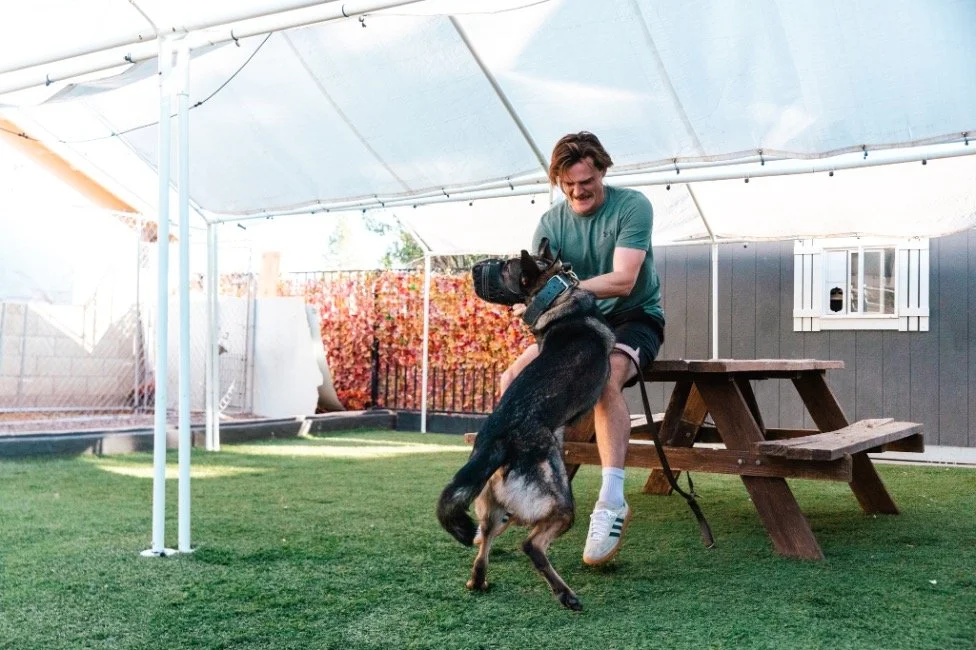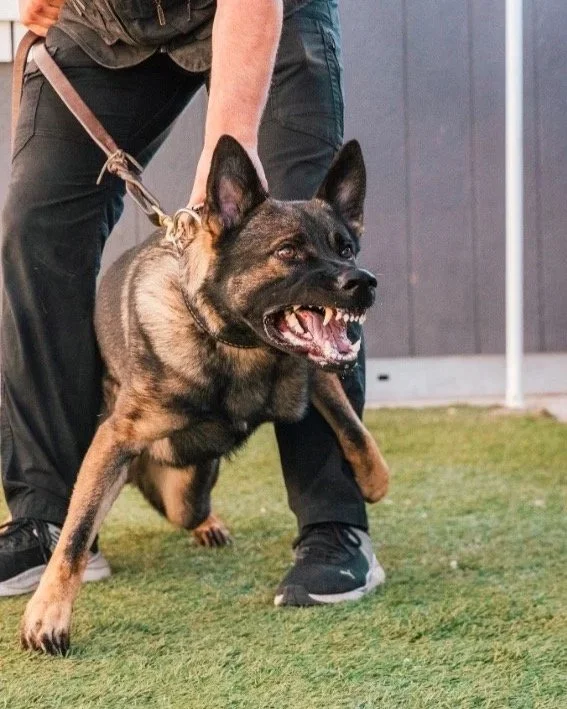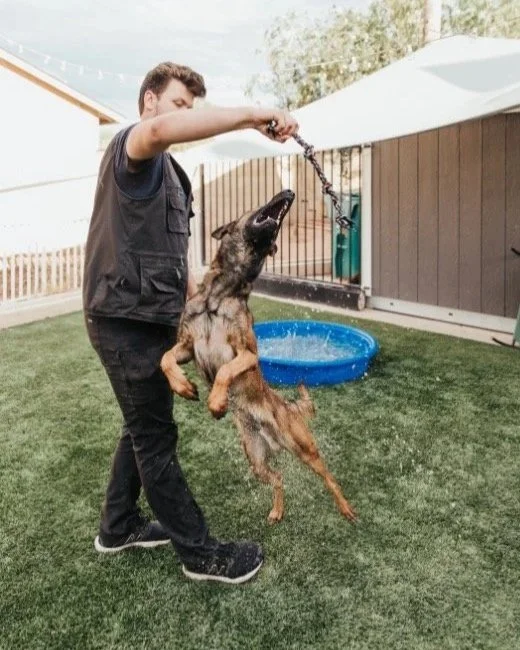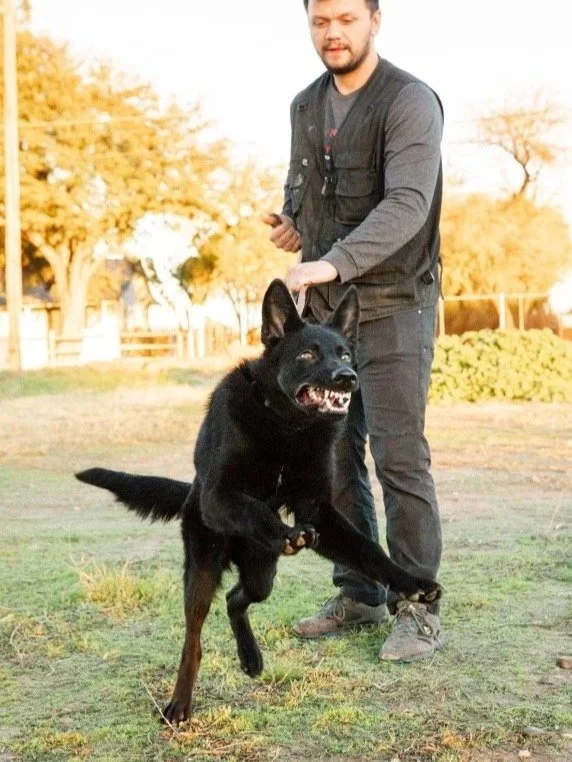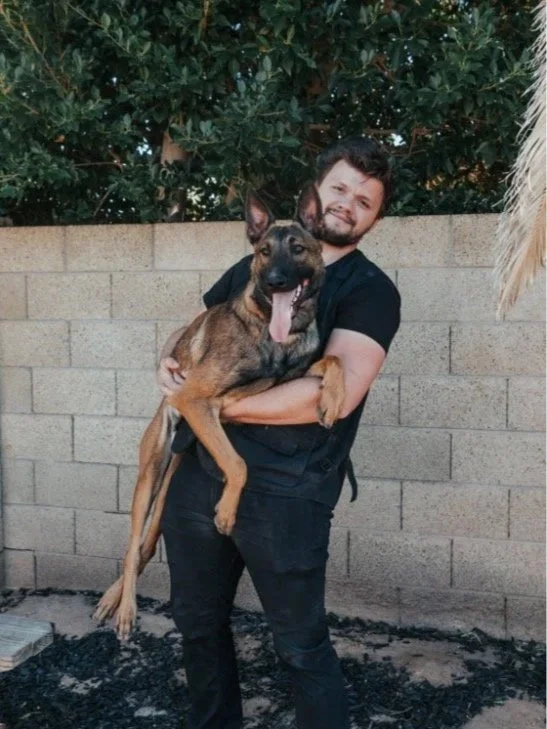Bonding With a Trained Protection Dog (Even If You Didn't Train It Yourself)
Understand That it Takes Time
Getting a trained protection dog isn’t as straightforward as installing a security camera at your house. It’s not a simple piece of gear. You’re bringing home a living, thinking partner who has been raised and conditioned to respond to a handler. Oftentimes, they’ve been with one highly experienced handler for the majority of their life.
And you’re not that handler… yet.
That’s okay. The dog already knows the job. They don’t know you, how you move, how you sound, how you react under pressure. That’s what you’ll be building together. But it’s important to understand that building that bond takes time, patience, and consistency.
Don’t Rush the First Few Weeks
The first few weeks are some of the most important with a new dog. This is where you’ll establish your routine. Most new handlers want to skip straight to the “cool” part: obedience drills, protection commands, off-leash work.
But if you push them too soon, you’ll only confuse the dog. Remember, this isn’t a blank slate. It’s not a puppy or a rescue dog with a troubled history. This dog already has a training foundation, and you’re stepping into an existing framework.
Here’s what to focus on instead:
Routine, structure, and predictability are your best friends right now. Walk, feed, and train at the same time each day. Dogs bond through reliability.
They’re in a new house with new people. That’s already a lot to take in. Limit introductions at first. Let them settle in before meeting the entire family and friend group.
Watch their body language. They’ll tell you when they’re relaxed, uncertain, or checking out of the situation. Pay attention, and respond with clarity, not emotion.
Don’t rush the getting-to-know-you stage. Be patient and consistent, and your dog will start seeing you as their person, not just a temporary living situation.
Build Trust without Ruining Training
Bonding isn’t done through an overload of affection. For a protecion dog, it’s done through safe and fair leadership.
They need clear communication. They need a handler who means what they say. What they don’t need is constant cuddles or baby talk.
Here’s what actually builds trust with a protection dog:
Train in short sessions (5-10 minutes) daily. Keep commands sharp and identical to what the dog already knows. Repetition goes a long way.
Reward calm. You’re aiming for respect and relaxation. respect and relaxation, not dependency.
Be confident. Dogs feel your energy through your tone and your movement. If you’re tense and inconsistent, they will feel that too.
Always follow through. If you give a command, see it through every single time. Inconsistency is the fastest way to lose trust with a trained dog. Why would they listen to you the first time if you’re not going to enforce it the second time?
It’s Time for You to be a Handler
A trained protection dog is only as good as the person on the other end of the leash. The good news is, Phantom K9 won’t just drop a dog at your door and leave you hanging. We spend weeks, if not months, working with you and your dog to get you set up for success.
If you don’t stay on top of the training, commands start to slip, timing gets sloppy, and the dog stops looking to you for direction. It’s not because it’s a “bad dog.” It’s because its a working dog that needs structure.
You should:
Learn the exact cues, tones, and expectations your dog was trained with. Trainined protection dogs are taught to respond to precision.
Ask questions. There’s no ego in learning. We would rather you ask a “dumb” question than make a mistake that confuses your dog.
Keep your timing sharp. Rewards and corrections only work if your timing is right. The clearer your communication, the faster your dog will respect your leadership.
Think of it like being handed the keys to a Ferrari. It’s powerful, responsive, and already tuned perfectly.
But if you don’t know how to drive it, all that power goes to waste or worse, becomes dangerous.
Mistakes That Wreck the Bond
We’re going to be blunt. These are the most common ways people mess up with a trained protection dog:
Over-babying the dog because “he’s new.” You’re trying to make him feel safe, but what you’re really doing is confusing his structure.
Letting everyone pet or play with him too soon. This dog’s bond needs to be with you, not every stranger in your circle.
Assuming obedience means bonding. The dog might follow commands perfectly, but that doesn’t mean they trust you yet. Keep up the training sessions over time.
Changing too much too soon. Keep the structure the dog already knows, then adjust slowly as you settle into a rhythm.
Bonding doesn’t equal smothering or spoiling. It’s respect earned through clear boundaries and consistency.
The Payoff is a Real Partnership
When it clicks, you’ll feel it.
Your dog will start checking in with you before reacting. He’ll match your pace, your tone, your confidence. You’ll stop overthinking commands because he’s already reading your intent.
A partnership with your dog comes when training and trust blend together.
It doesn’t happen overnight, but when it does, you’ll have something very few people ever experience: a working dog who’s fully in sync with you. You’ll have a protective, responsive, and loyal to the bone dog.
Contact us today to learn more about bringing a protection dog into your home.
